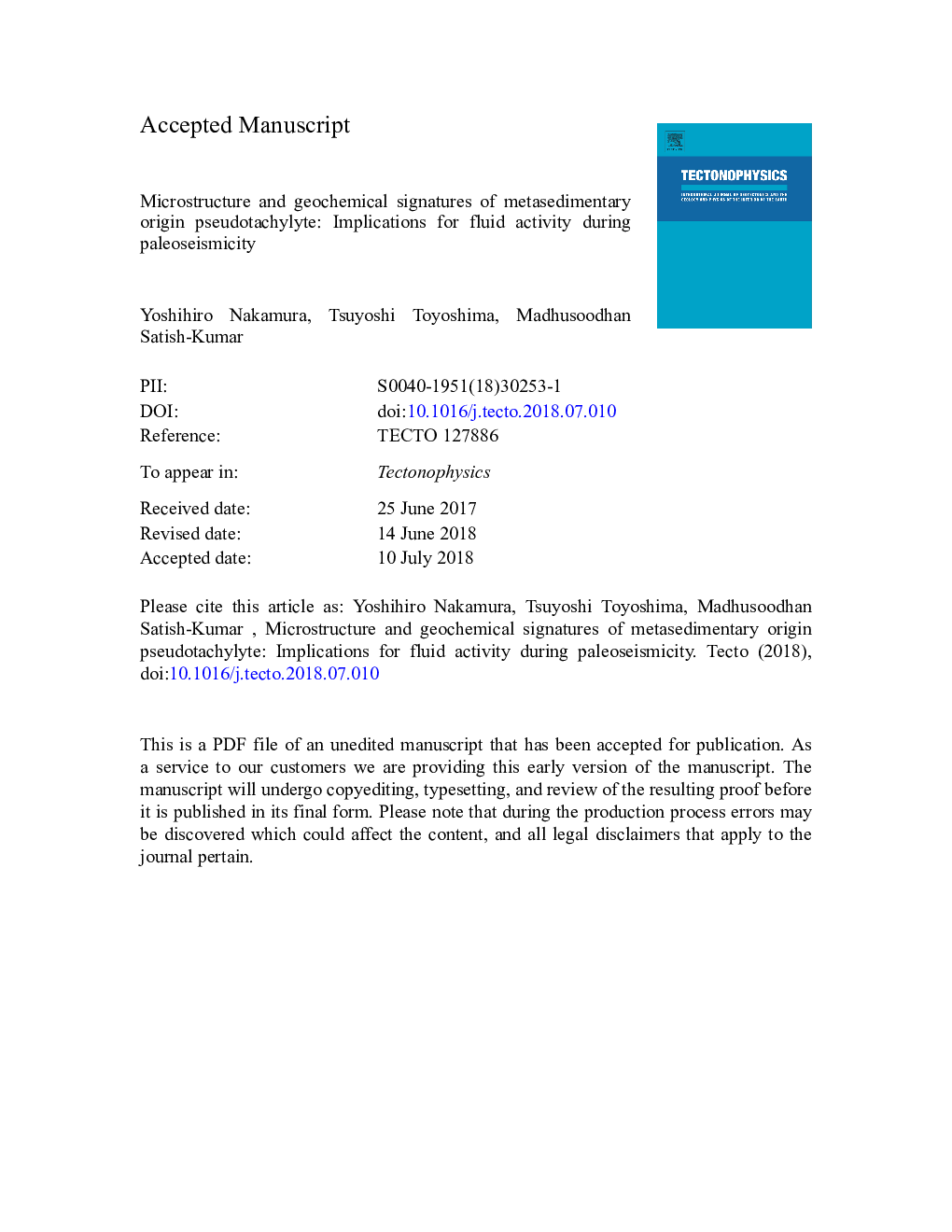| Article ID | Journal | Published Year | Pages | File Type |
|---|---|---|---|---|
| 9528374 | Tectonophysics | 2018 | 48 Pages |
Abstract
The redox state of pseudotachylyte provides valuable information on the physicochemical properties related to fluid activity during paleoseismicity. In this study, we evaluate the behavior of fluids in pseudotachylytes using fluid buffering minerals such as graphite and other secondary minerals. Two types of pseudotachylyte were identified in the Hidaka metamorphic belt, Hokkaido, Japan; Pst I and Pst II. Pst I is composed of pyrrhotite and K-feldspar generated by the breakdown of phyllosilicates, whereas Pst II includes recrystallized biotite microlites, K-feldspar, and plagioclase due to the breakdown of quartz and feldspars, as well as phyllosilicates. The selective frictional melting of phyllosilicates is indicated by significant changes in the concentrations of large ion lithophile elements (e.g., Ba, Sr, Rb, Cs, B, and K). In addition, the graphite associated with titanite and hydroxyapatite is often distributed within the Pst II matrix. The graphite exhibits different crystallinity, morphology, and higher carbon stable isotopic compositions (δ13Câ¯=â¯â21.9â¯Â±â¯2.3â°, nâ¯=â¯16), when compared with metamorphic graphite extracted from the protolith (δ13Câ¯=â¯â25.1â¯Â±â¯0.8â°, nâ¯=â¯15), cataclasite, ultracataclasite, and Pst I (δ13Câ¯=â¯â25.2â¯Â±â¯0.8â°, nâ¯=â¯15). The microstructure and geochemical signatures in both pseudotachylytes are controlled by dehydration-redox reaction of phyllosilicates coexisting with sulfide minerals and graphite. In particular, the formation of 13C enriched graphite in the Pst II can be deduced by co-precipitation of fluid-deposited graphite with hydrous minerals from H2O-CH4 fluids and/or degassing of H2O-CH4 fluids from residual graphite. Our data demonstrated that the carbonic fluids of a reducing nature could be produced, and then dissolved into the pseudotachylyte melt by frictional melting of metasedimentary rocks. The production of carbonic fluids by coseismic slip may be an overlooked process in the remobilization of refractory graphite locked in the crust.
Related Topics
Physical Sciences and Engineering
Earth and Planetary Sciences
Earth-Surface Processes
Authors
Yoshihiro Nakamura, Tsuyoshi Toyoshima, Madhusoodhan Satish-Kumar,
